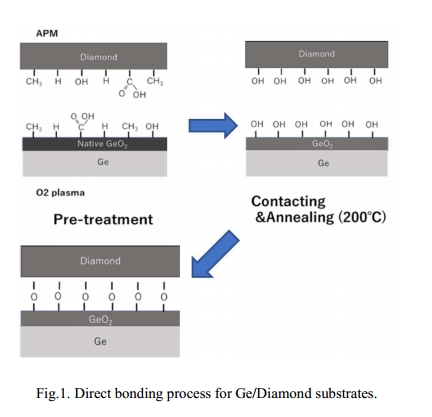e has excellent performance as a semiconductor device material, including electron and hole mobility 2.5 and 3.5 times higher than these of Si, respectively . However, its thermal conductivity is 0.4 times lower than that of Si, making it difficult to dissipate heat generated by the device. For efficient heat dissipation, we demonstrated the direct bonding of the Ge substrate and a diamond heat-dissipating substrate, which has the highest thermal conductivity among solids.
For the Ge/diamond integration, surface activated bonding is a possible candidate. Meanwhile, this process requires ultrahigh vacuum conditions, which hinders widespread applications. Hydrophilic bonding is another approach to Ge/diamond integration because it allows low-temperature bonding under atmospheric pressure. It has been reported that diamond heat-dissipating substrates can be bonded to other materials, including Si and Ga2O3 substrates at ~200°C using this method.

In order to overcome the heat dissipation problem of the Ge devices, we have demonstrated direct bonding between a Ge substrate and a diamond heat-dissipating substrate by using a hydrophilic bonding method. The void-free and strong bonding was obtained between the Ge and diamond substrates. This direct bonding improves the heat dissipation of germanium devices, which will contribute to the realization of new devices in the next generation.
CSMH has been committed to the research and development and production of diamond materials. Now it has products such as diamond heat sink sheet,diamond wafer, diamond window to provide customers with a comprehensive thermal management solution.
 闽ICP备2021005558号-1
闽ICP备2021005558号-1Leave A Message